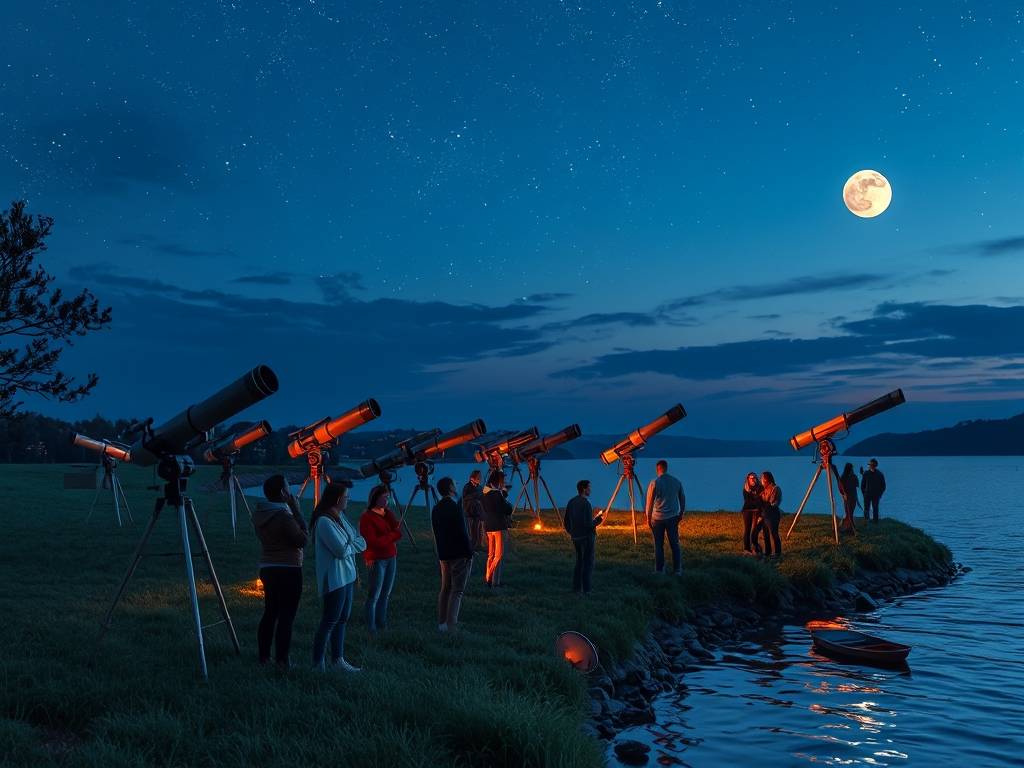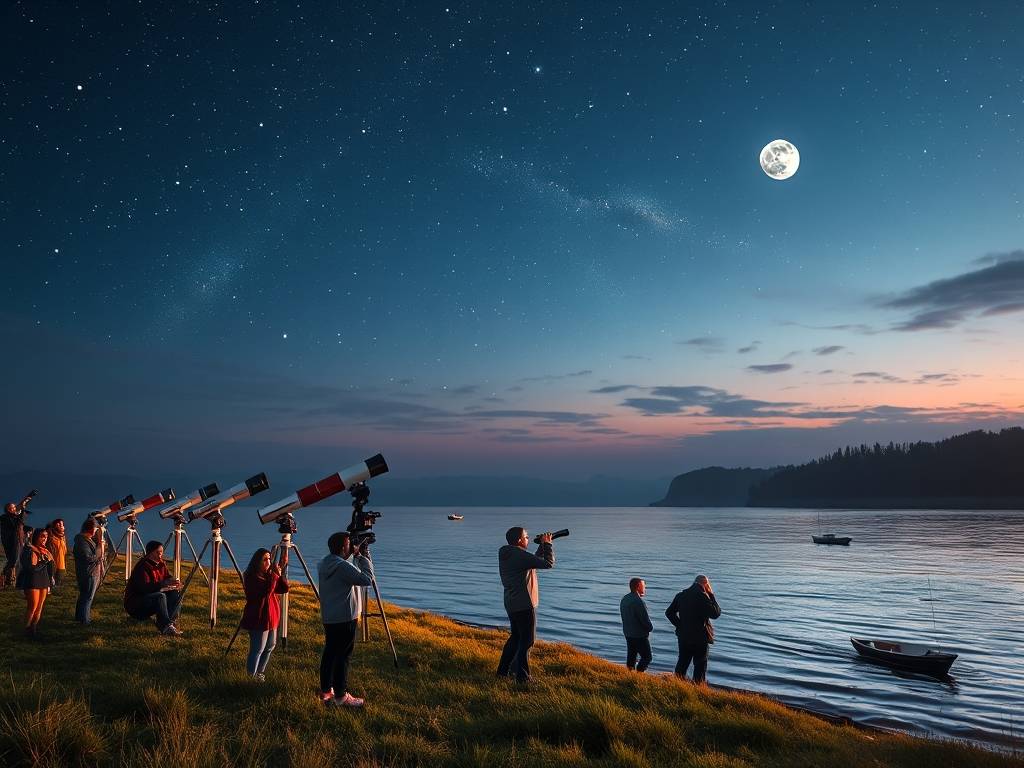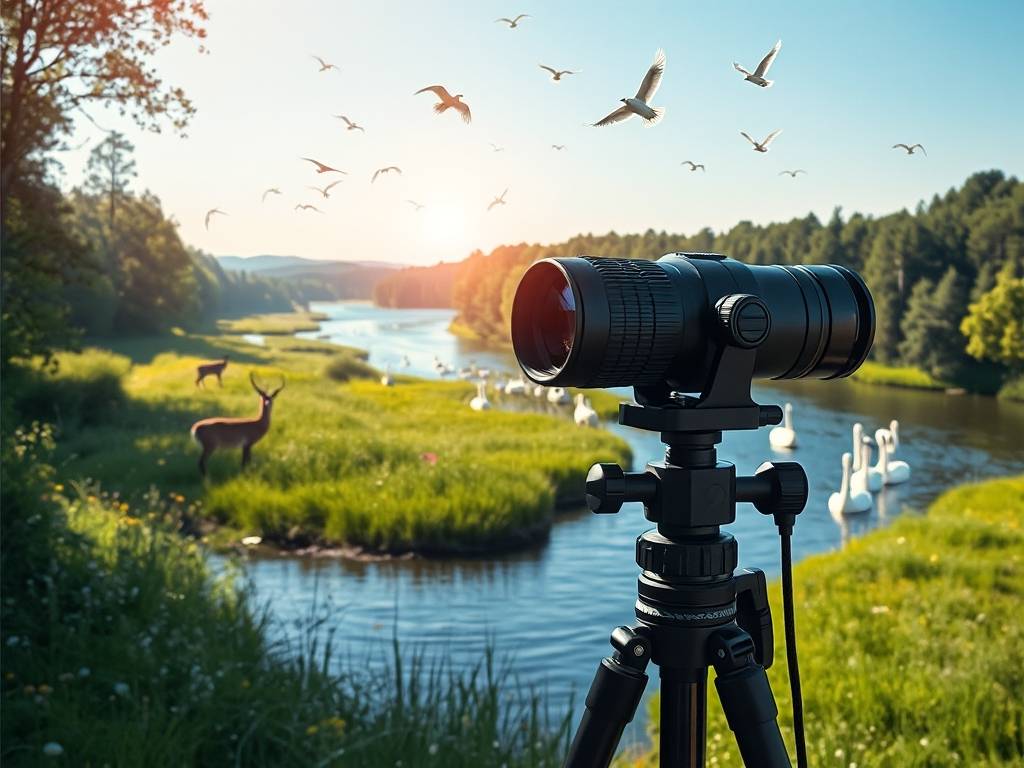Global Travel Information
Elbe River Telescopes: Stargaze by the Water
Elbe River Telescopes: Stargaze by the Water
Imagine a place where the timeless flow of a great river meets the infinite expanse of the cosmos. Where the gentle lapping of water against the shore provides a soothing soundtrack to the silent, dazzling dance of distant stars. This isn't a scene from a poet's dream; it's the unique and enchanting experience of stargazing along the Elbe River. From the historic banks of Dresden to the serene meadows of the Saxon and Bohemian countryside, the Elbe offers a gateway to the universe that is both accessible and profoundly beautiful. This journey explores why combining the Elbe River with a telescope creates an unparalleled stargazing adventure, offering practical advice, historical context, and a deep dive into the celestial wonders awaiting you.

The magic begins with the location itself. The Elbe River, winding through Central Europe, creates natural corridors that often lead to surprisingly dark skies, especially as you move away from major urban hubs. The key to successful stargazing is not just a powerful telescope, but a dark sky. The concept of "dark sky preservation" is crucial here. Light pollution from cities washes out the faint glow of nebulae and the delicate structure of the Milky Way. By seeking out locations along the Elbe that are dedicated to "minimizing light pollution for better astronomy," you dramatically increase what you can see. Think of the river as your guide, leading you to pockets of tranquility where the night sky can truly perform.

So, where exactly should you set up your gear? For the urban stargazer, Dresden itself offers charming spots. The Elbe meadows, a UNESCO World Heritage site, provide a relatively open view of the sky with the city's iconic silhouette adding a touch of drama to your observations. However, for a truly transformative experience, venturing further is essential. The Saxon Switzerland region, with its dramatic sandstone cliffs rising above the river, offers elevated platforms that are perfect for "astronomy tourism for beginners and experts." Here, you are higher up, often above the haze and localized light, resulting in a crisper view. Cross into the Czech Republic to the Bohemian Switzerland National Park, and you'll find some of the darkest skies in the region, officially recognized for their stellar quality. These areas are becoming havens for what is known as "riverbank astronomy and celestial viewing," a niche but growing pursuit that combines natural beauty with cosmic exploration.
Now, let's talk about the main event: the telescope. You don't need a giant, complex instrument to start your "Elbe River stargazing journey." In fact, a common mistake beginners make is buying an overly powerful but cumbersome telescope that never leaves the closet. For a mobile and enjoyable experience by the water, consider starting with a good pair of astronomy binoculars or a simple, portable refractor telescope. These are easy to transport, quick to set up, and perfect for sweeping views of the Milky Way, tracing the lunar craters, or observing Jupiter's moons. The goal is "easy stargazing tips for urban astronomers and tourists" – keeping it simple and fun. As you grow more passionate, you might invest in a larger reflector or catadioptric telescope with a Go-To computerized mount, which can automatically find celestial objects for you. But remember, the best telescope is the one you'll actually use.
Once you're under a dark Elbe sky with your telescope, what should you point it at? The universe offers a changing roster of wonders throughout the year. In summer, the center of our Milky Way galaxy dominates the southern sky. Even without a telescope, it appears as a faint, cloudy band arching over the river. Through your eyepiece, you can explore star clusters like the Hercules Cluster (M13), a glittering ball of hundreds of thousands of stars. The Ring Nebula (M57) is a fascinating planetary nebula, the ghostly glow of a dying star, and a prime target for "celestial photography from unique locations."
Autumn brings the Andromeda Galaxy (M31) high in the sky. This faint smudge of light is our nearest galactic neighbor, a collection of a trillion stars over 2.5 million light-years away. Seeing it with your own eye is a humbling experience. Winter offers the most spectacular stellar sights. The Orion Nebula (M42), a vast cloud of gas and dust where new stars are being born, is a breathtaking sight in any telescope, showing delicate wisps of glowing gas. The crisp winter air often provides the steadiest "views," perfect for planetary observation.
Speaking of planets, they are the crown jewels of "family-friendly night sky activities." Saturn and its magnificent rings, Jupiter with its cloud bands and dancing Galilean moons, and the red hue of Mars are sights that never fail to elicit a gasp of wonder. These objects are bright, easy to find, and reveal fascinating details even in modest telescopes, making them perfect for sharing the experience with friends and family.
Beyond the technical aspects, stargazing by the Elbe is also a historical pilgrimage. This region has a deep connection to astronomy. In the 18th century, Dresden was a center of scientific innovation. It was here that the musician and astronomer Wilhelm Corolus developed precise lunar maps. The nearby city of Jena, accessible via the Elbe's tributaries, became world-famous for its optical industry, producing the lenses and mirrors that powered telescopes across the globe. When you set up your telescope on the banks of the Elbe, you are standing in the footsteps of these pioneers, using modern versions of the technology they helped perfect. This connection adds a rich layer of meaning to your "night sky observation experience."
To ensure your stargazing trip is a success, a little preparation goes a long way. Check the weather and moon phase. A clear, moonless night is ideal for seeing faint galaxies and nebulae. Dress warmly; nights by the river can be surprisingly chilly even in summer. Bring a red-light flashlight to read star maps without ruining your night vision. Use astronomy apps on your phone to help identify constellations and locate planets, but be sure to dim your screen. Most importantly, be patient. Allow your eyes at least 20 minutes to fully adapt to the darkness. The sky will gradually reveal more and more of its secrets.
In our fast-paced, digitally saturated world, the act of looking up is a form of therapy. Stargazing by the Elbe River is more than a hobby; it's a reminder of our place in a vast and beautiful universe. It combines the serene, grounding presence of flowing water with the mind-expanding awe of cosmic exploration. It’s an activity that is equally rewarding whether you are a solo seeker of quiet contemplation, a couple on a romantic getaway, or a family introducing children to the wonders of science. So, pack a thermos of tea, a blanket, and your telescope, and let the Elbe River guide you on a journey not just through Saxony or Bohemia, but across the galaxy and beyond. The stars over the water are waiting to tell their story.
相关文章
- Elbe River Binoculars: Spot Wildlife from Afar
- Elbe River Compasses: Stay Oriented on Hikes
- Elbe River GPS Devices: Navigate the Area Easily
- Elbe River Walkie-Talkies: Stay Connected with Travel Buddies
- Elbe River Radios: Listen to News & Music
- Elbe River Books on Tape: Audiobooks for Long Walks
- Elbe River Music Playlists: Tunes for Your River Trip
- Elbe River Podcast Playlists: Listen While You Explore
- Elbe River Audiobooks: Stories to Enjoy Along the Way
- Elbe River Language Courses: Learn German During Your Trip
发表评论
评论列表
- 这篇文章还没有收到评论,赶紧来抢沙发吧~


